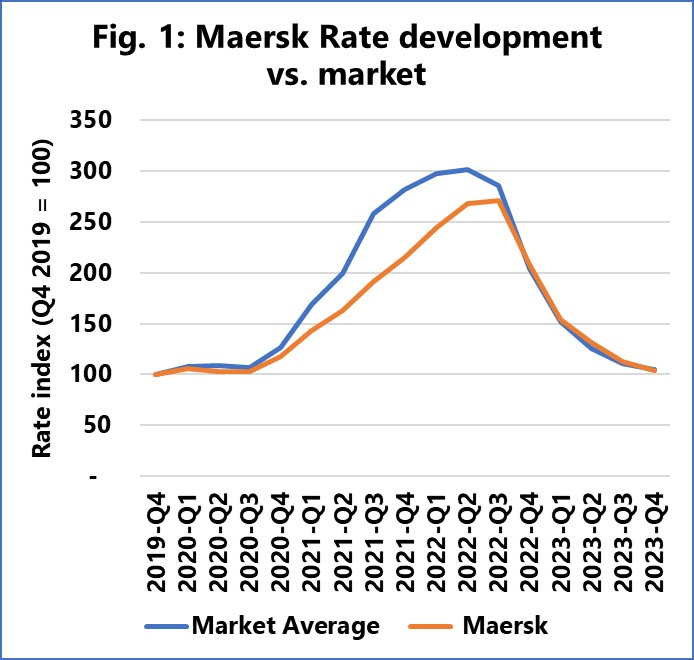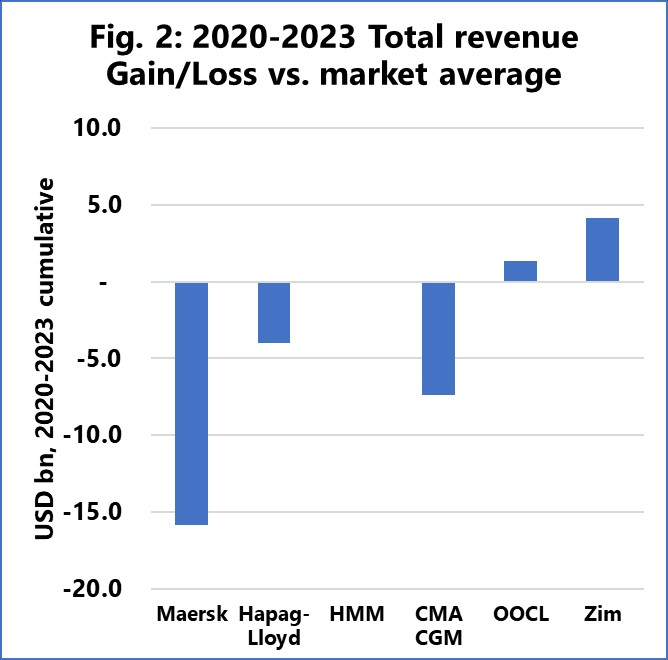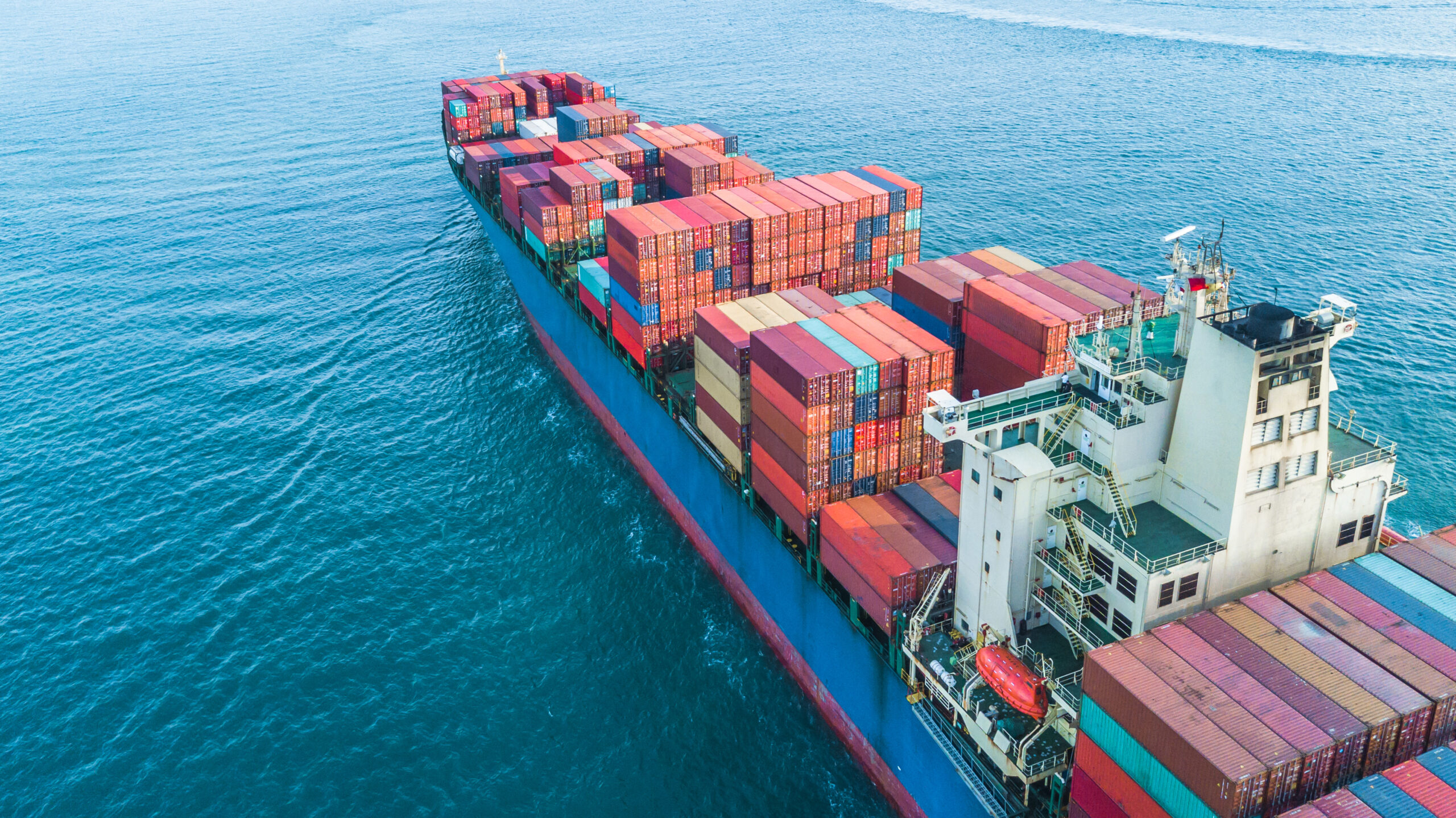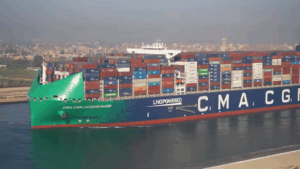One of the key challenges in container shipping, is the lack of shipper/carrier contract enforceability. With freight rates increasing sharply, as they have been recently, there are calls for carriers to stick to contracts, and moderate their pursuit of revenue.
Such calls would implicitly assume that shippers would reciprocate, when the market eventually goes down.
Denmark-based research and analysis specialist Sea‑Intelligence wonders if customers will be more loyal when the market goes down in case a carrier is less aggressive in terms of rate increases when the market goes up.
“There is clearly an asymmetry in loyalty,” says Alan Murphy, chief executive of Sea-Intelligence in a press release.
“Carriers who raise their rates at a slower pace are not rewarded similarly, when the market turns negative. From a carrier perspective, it is better to increase rates as fast as possible, rather than to hope for shipper loyalty when the market turns,” Mr. Murphy adds.
The blue line in figure 1 shows the market average freight rate, based on the global rate index from Container Trade Statistics, while the orange line is Maersk’s average freight rate.
Both are calculated on a quarterly index basis, with the average freight rate in 2019-Q4 set as index 100.

“We can see that Maersk raised their global average rate level significantly slower than the market during the pandemic. However, when the rate levels began declining, Maersk saw a decline fully matching the market decline, which means that in this case, there was no quid pro quo from the shippers,” as Sea‑Intelligence explains.
The loss/gain in USD revenue from not following the market, for those major carriers where it can be calculated, is shown in figure 2.

Alan Murphy explains that Maersk had a potential loss in revenue of $15.7bln in 2020-2023, whilst ZIM gained revenue of $4.2bln, by increasing rates faster and higher than the market.



